Have you ever been at home during an earthquake and the lights turned off due to a loss of power? Imagine what it would be like to be in a hospital on an operating table during an earthquake or for a ceiling to fall on you while you are lying on your hospital bed.
One of the last things you want is to experience serious electrical, mechanical or plumbing failures during or after a seismic event. During the 1994 Northridge earthquake, 80%-90% of the damage to buildings was to nonstructural components. Ten key hospitals in the area were temporarily inoperable primarily because of water damage, broken glass, dangling light fixtures or lack of emergency power.
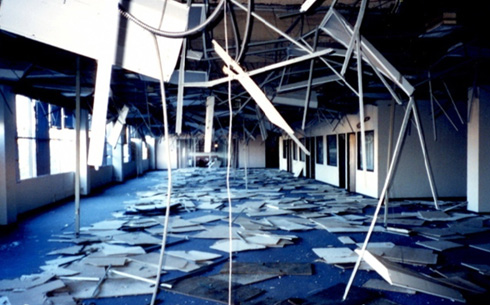
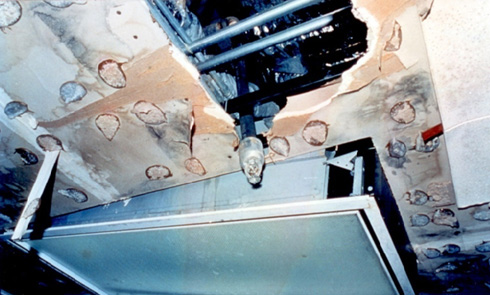
ASCE 7 has an entire chapter titled Seismic Design Requirement of Nonstructural Components (Chapter 13 of ASCE 7-10) that is devoted to provisions on seismic bracing of nonstructural components. Unfortunately, not a lot of Designers are aware of this part of the ASCE. This blog post will walk Designers through the ASCE 7 requirements.
Nonstructural components consist of architectural, mechanical, electrical and plumbing utilities. Chapter 13 of ASCE 7-10 establishes the minimum design criteria for nonstructural components permanently attached to structures. First, we need to introduce some of the terminology that is used in Chapter 13 of ASCE 7.
- Component – the mechanical equipment or utility.
- Support – the method to transfer the loads from the component to the structure.
- Attachment – the method of actual attachment to the structure.
- Importance Factor (Ip) – identifies which components are required to be fully functioning during and after a seismic event. This factor also identifies components that may contain toxic chemicals, explosive substances, or hazardous material in excess of certain quantities. This is typically determined by the Designer.
Section 13.2.1 of ASCE 7 requires architectural, mechanical and electrical components to be designed and anchored per criteria listed in Table 13.2-1 below.
Architectural components consist of furniture, interior partition walls, ceilings, lights, fans, exterior cladding, exterior walls, etc. This list may seem minor compared to structural components, but if these components are not properly secured, they can fall and hurt the occupants or prevent them from escaping a building during a seismic event. The risk of fire also increases during an earthquake, further endangering the occupants.
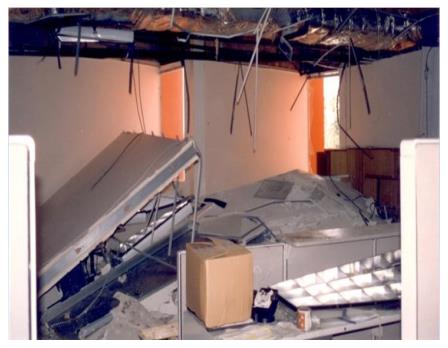
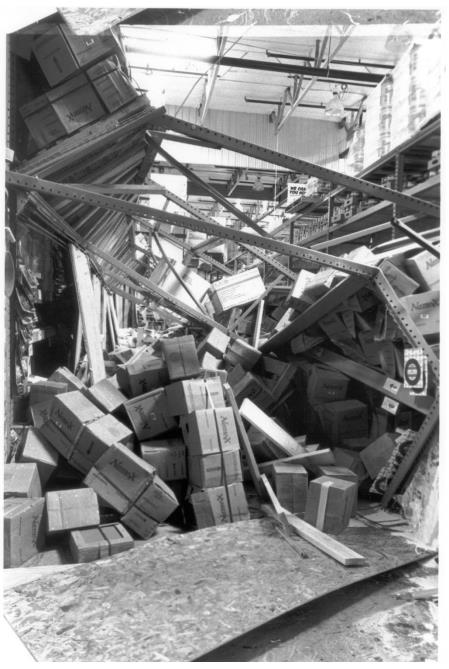
Section 13.5 of ASCE 7-10 includes the necessary requirements for seismic bracing of architectural components. Table 13.5-1 provides various architectural components and the seismic coefficients required to determine the force level the attachments and supports are to be designed for.
Mechanical and electrical components consist of floor-mounted and suspended equipment. It also includes suspended distributed utilities such as ducts, pipes or conduits. These components are essential in providing the necessary functions of a building. In a hospital, these components are required to be fully functioning both during and after a seismic event. A disruption of these components can make an entire hospital building unusable. In order for hospitals to properly service the needs of the public after a seismic event, fully functioning equipment is essential.
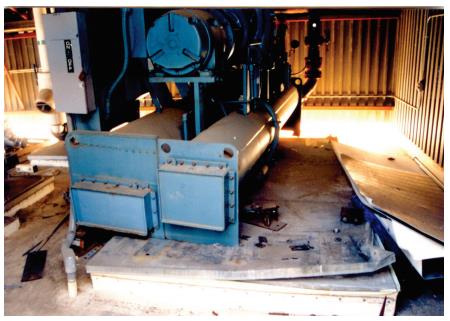
Section 13.6 of ASCE 7-10 provides the requirements of seismic bracing for mechanical and electrical components. Table 13.6-1 provides a list of typical components and the coefficients required to determine the force level the attachments and supports are to be designed for.
Chapter 13 lists some typical requirements for which components are to be anchored and supported under specific conditions:
- Section 13.1.4 item 6c: Any component weighing more than 400 pounds.
- Section 13.1.4 item 6c: Any component where its center of gravity is more than 4 feet above the floor.
- Section 13.6.5.6 has specific electrical conduit size and weight requirements.
- Section 13.6.7 has specific size and weight requirements for suspended duct systems.
- Section 13.6.7 has specific size and weight requirements for suspended piping systems.
The chapter also has some general exceptions to the rules:
- 12 Inch Rule: When a distributed system such as conduit ducts or pipes are suspended from the structure with hangers less than 12 inches in length, seismic bracing is not required.
- If the support carrying multiple pipes or conduits weighs less than 10 pound/feet of lineal weight of the component, the seismic bracing of the support does not have to be considered.
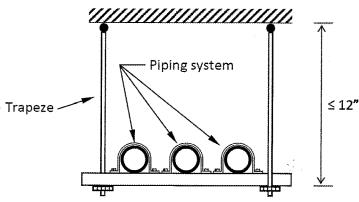
These exceptions do have limitations that are clearly listed in Sections 13.6.5.6, 13.6.7 and 13.6.8.
These systems may not seem important in the structural systems of a building, but they are essential in allowing the building to function the way it was designed to serve the public. It is also important that occupants are able to escape a damaged building after a seismic event. Obstacles such as bookcases blocking exit doors or falling debris may prevent occupants from leaving a building after a seismic event.
It is important that Designers are aware of these code requirements and take the time to read and understand what is needed to provide a safe structure.



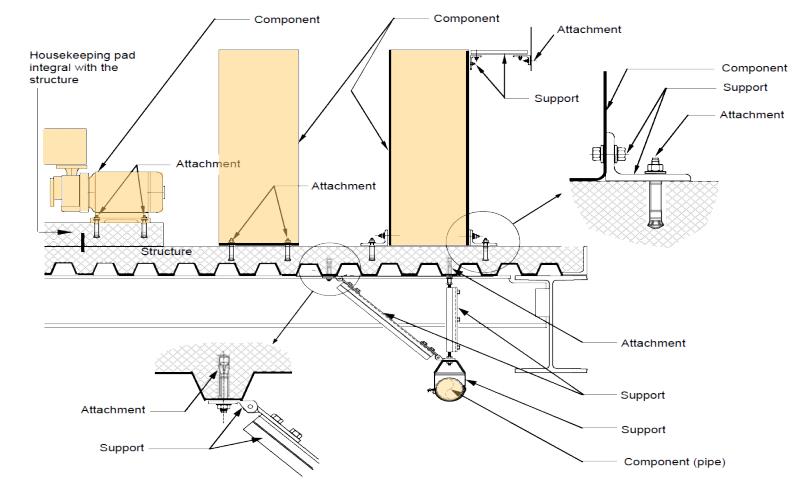


What is the industry-standard for who designs the needed supports – the engineer of record, or specialty engineers hired by the installing contractors?
I’m a bit confused by your use of the word supports. Chapter 13 deals with connections to a structural element, not the design of the structural element. To give an example, as a light gauge steel engineer, we design the clip connection including screws and fasteners to the structure based on chapter 13, we do not design the structure supporting our connection. The EOR would design the primary structure that supports our connection, but that design does not use chapter 13 since the EOR is designing structural components
After reading the article again, I see the word support is defined as ” the method to transfer the loads from the component to the structure” . So I would say the specialty engineer should be the one to design the support.
I am interested in who designs the attachments (anchor-bolts for example) of generators, pumps, battery racks etc. I have seen it both ways – by the Structural Engineer of Record and by Structural Engineers hired by the equipment supplier or General Contractor. I am wondering which way is more prevalent, and the pros and cons of doing it one way versus the other.
Mr. Welti, in most cases, the specialty contractor is responsible for hiring a design professional to design all supports and attachment of the components (anchor bolts, seismic bracing, seismic certification of equipment, etc). In smaller jobs, the Structural Engineer of Record is typically hired to provide the necessary design services for the supports and attachments. As a design professional, Engineers of Record should bring up the issue of designing the attachment and supports for all the components specified in Chapter 13 of ASCE 7-10. A question should be raised on who will be providing this service. Unfortunately, I have seen jobs where attachments and supports were not installed or properly designed because the contractor or the Designer were not aware of the requirements in Chapter 13. As Structural Engineers, we have to educate our building owners, contractors and even building officials of this requirement. ASCE 7-10 Chapter 13 section 13.2.1 subsection 1 states that all designs of attachments and supports for components should be submitted to the authority having jurisdiction for approval after review and acceptance by a registered design profession. Unfortunately this section does not get enforced too often .
Usually the Specialty Structural Engineer working for the contractor installing a non-structural component is responsible. For example, an HVAC contractor may hire an SSE to design seismic bracing. The design and calculations from the SSE are submitted to the EOR and to the building department for review and issuance of a deferred submittal building permit. Cities should record the requirement when they review and issue the building permit for the structure indicating that some components will be reviewed later (deferred submittal). The EOR has the ability to list deferred submittals that they expect to see in their General Requirements and Notes section on their plans. So it’s not just a matter of bringing up the issue, the EOR can proactively require that the GC submit engineered drawings and calculations on behalf of the subcontractors.
Mr. Kirkham, you are correct. The EOR has a duty to list all the deferred submittal in their General Requirements and Notes. I have found most contractors submit these drawings and calculations to the MEP design professionals and it stops there. It does not go further to the building officials to check and enforce. When I have done presentations in the past at some notable building departments, I have had some interesting questions that shows me that most of these requirements are not fully enforced, some of them even think it is a new requirement in the code. I think it is the duty of the engineers to educate people about the contents of the code. It would be a good start if Engineers start putting these requirements on their General Notes. It is important to understand that even boxed stores such as Target and Walmart has these systems that require seismic bracing or anchorage designs for their systems that has an important factor of 1.5. Thank you for commenting and reading the post. I hope to do more on this topic in the future.